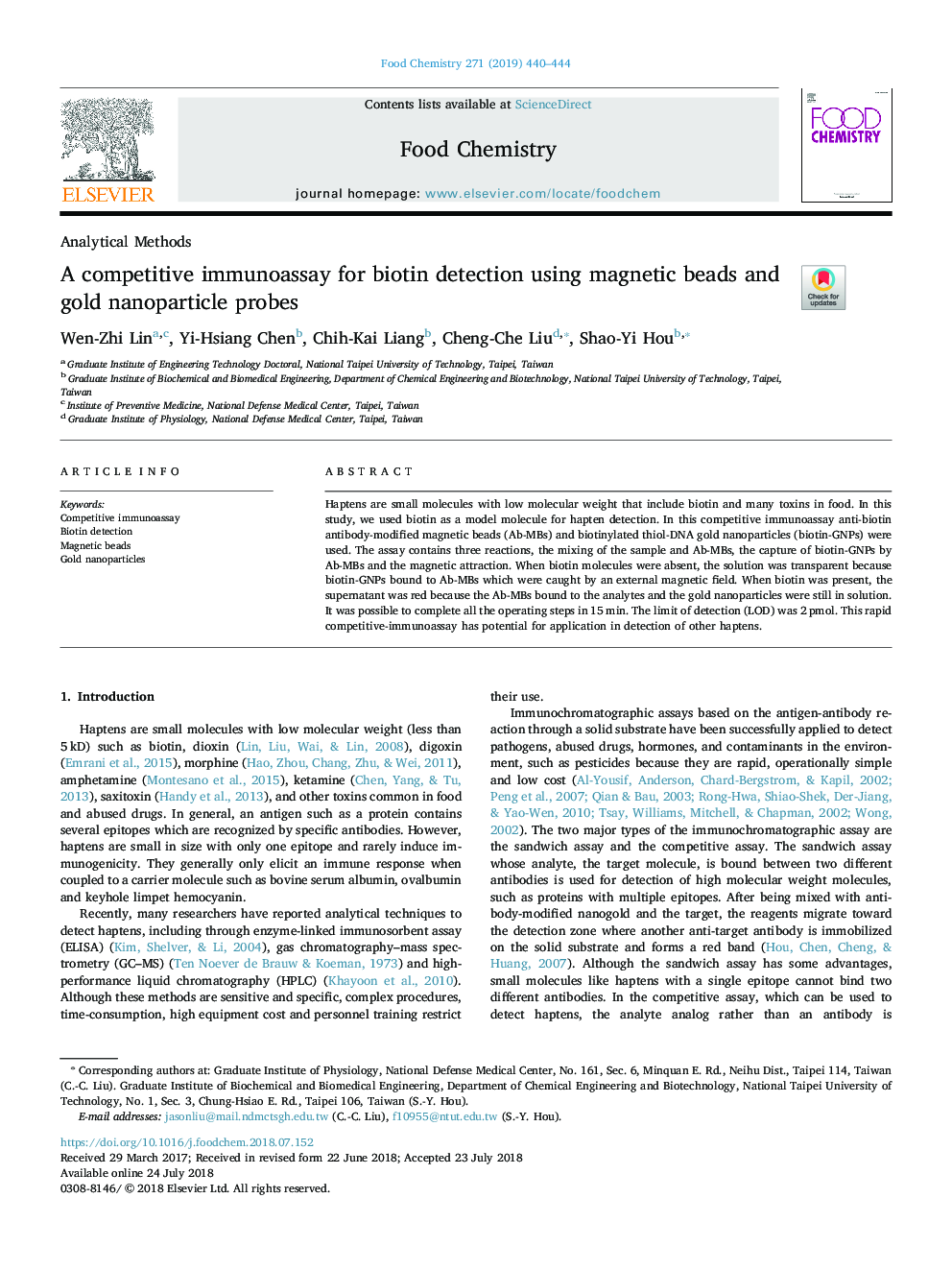| Article ID | Journal | Published Year | Pages | File Type |
|---|---|---|---|---|
| 7583930 | Food Chemistry | 2019 | 5 Pages |
Abstract
Haptens are small molecules with low molecular weight that include biotin and many toxins in food. In this study, we used biotin as a model molecule for hapten detection. In this competitive immunoassay anti-biotin antibody-modified magnetic beads (Ab-MBs) and biotinylated thiol-DNA gold nanoparticles (biotin-GNPs) were used. The assay contains three reactions, the mixing of the sample and Ab-MBs, the capture of biotin-GNPs by Ab-MBs and the magnetic attraction. When biotin molecules were absent, the solution was transparent because biotin-GNPs bound to Ab-MBs which were caught by an external magnetic field. When biotin was present, the supernatant was red because the Ab-MBs bound to the analytes and the gold nanoparticles were still in solution. It was possible to complete all the operating steps in 15â¯min. The limit of detection (LOD) was 2â¯pmol. This rapid competitive-immunoassay has potential for application in detection of other haptens.
Related Topics
Physical Sciences and Engineering
Chemistry
Analytical Chemistry
Authors
Wen-Zhi Lin, Yi-Hsiang Chen, Chih-Kai Liang, Cheng-Che Liu, Shao-Yi Hou,
